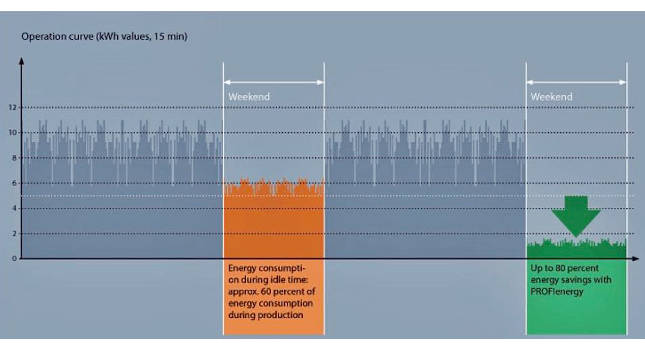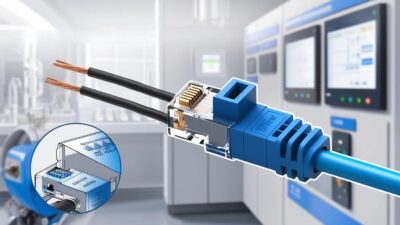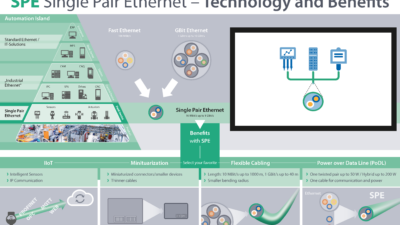Automation components consume a large amount of energy during production and can strain industrial networks' ability to run properly.

Energy is one of the most significant cost burdens in many manufacturing facilities. Automation components consume a large amount of energy during production. Additionally, energy consumption can also be significant during production-free periods (see diagram below).
PROFIenergy offers energy-saving capabilities in automation systems. It enables the deployment of smart energy management strategies over Profinet. Devices can be switched into ‘sleep’ or OFF modes to save on energy usage during production pauses. After the pause, the devices are again available and ready for operation on a reliable basis. During production pauses, PROFIenergy mechanisms reduce energy consumption by up to 80%, as shown in green in the diagram above. The following are some examples of production pauses:
- Expected short breaks – Lunchtime and shift changes
- Planned longer breaks – Nights and weekends
- Unplanned pauses – Breakdowns, maintenance, and upgrades.
Also, it is possible to employ this Profile even while production is running. While a plant is running at full capacity, some components might be idle during tool changes or as part of the standard workflow. PROFIenergy can set those automation components to ‘sleep’ mode appropriately, even for very short periods. Then, it is possible to utilize PROFIenergy fully during production breaks and partially during production.
Network components and implementation
Implementing PROFIenergy requires no additional wiring or external hardware. The signals are transmitted over the existing network, which may contain a mix of components. Not all components need to support PROFIenergy. To establish a configuration, at least one controller and device must have PROFIenergy capabilities.
The controller must support some application code such as function blocks or another application programming interface (API) to use the associated commands. The controller connects to a set of vastly different devices. And each device provides its own energy-saving features and modes. The automation controllers on a network determine when devices are switched into power-saving mode. The user can schedule regular production stops, based on factory operation, or can set them in response to production conditions. The same controller usually issues PROFIenergy commands as automation processes. However, it is possible to implement a dedicated controller for energy management.
The user only needs to know a simple set of commands to configure PROFIenergy in a Profinet network. These commands are based on the read/write record mechanism of Profinet communication.
With PROFIenergy, the switching mechanisms controlling the power saving modes of equipment reside inside the energy consuming units (ECUs). ECUs can be single devices, a production cell, or even a larger product unit. Profinet transmits standardized energy-management commands to end devices and receives back status information and energy consumption data. Energy management data uses the acyclic slots of the Profinet communication protocol, and it does not interfere with normal Profinet processes.
Nelly Ayllon is technical marketing director for PI North America, a CFE Media content partner. This article originally appeared on PI North America’s website. Edited by Chris Vavra, web content manager, Control Engineering, CFE Media, [email protected].


